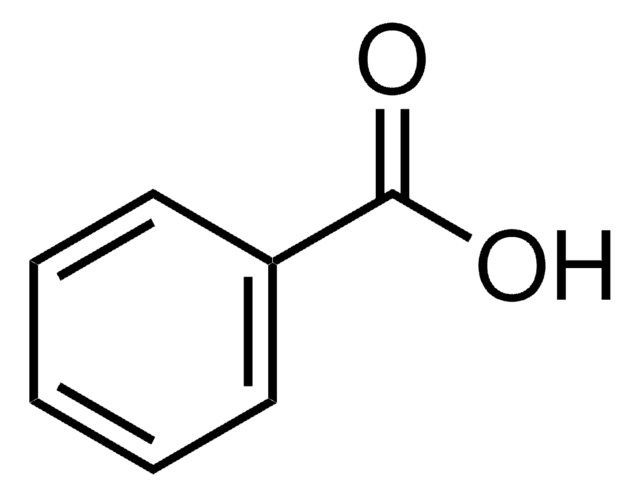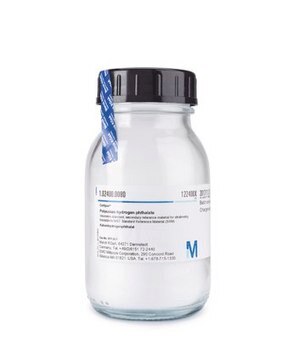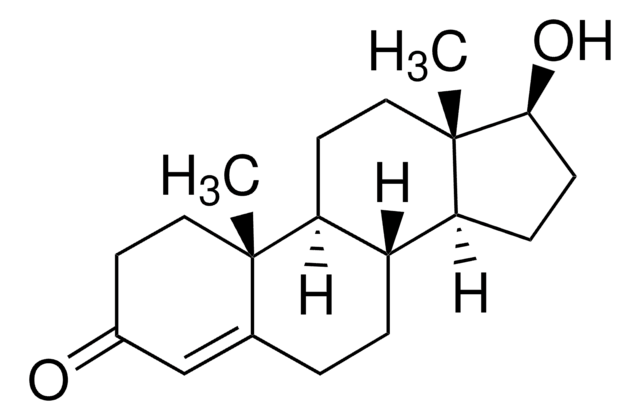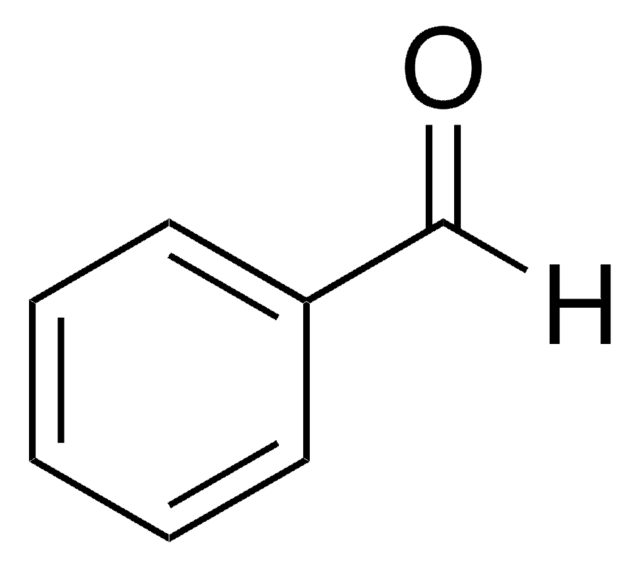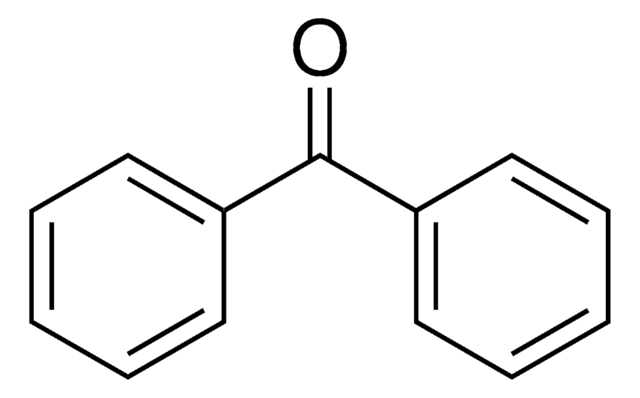Y0001470
Benzoesäure
European Pharmacopoeia (EP) Reference Standard
About This Item
Empfohlene Produkte
Qualität
pharmaceutical primary standard
Agentur
Ph. Eur.
Dampfdichte
4.21 (vs air)
Dampfdruck
10 mmHg ( 132 °C)
Beschreibung
API family: benfluorex
API-Familie
mefenamic acid, benfluorex, metronidazole
Selbstzündungstemp.
1061 °F
Hersteller/Markenname
EDQM
Verfügbarkeit
not available in (Sales restrictions may apply)
bp
249 °C (lit.)
mp (Schmelzpunkt)
121-125 °C (lit.)
Anwendung(en)
pharmaceutical (small molecule)
Format
neat
Lagertemp.
2-8°C
SMILES String
OC(=O)c1ccccc1
InChI
1S/C7H6O2/c8-7(9)6-4-2-1-3-5-6/h1-5H,(H,8,9)
InChIKey
WPYMKLBDIGXBTP-UHFFFAOYSA-N
Suchen Sie nach ähnlichen Produkten? Aufrufen Leitfaden zum Produktvergleich
Allgemeine Beschreibung
Anwendung
Verpackung
Sonstige Hinweise
Ähnliches Produkt
Signalwort
Danger
H-Sätze
Gefahreneinstufungen
Eye Dam. 1 - Skin Irrit. 2 - STOT RE 1 Inhalation
Zielorgane
Lungs
WGK
WGK 1
Choose from one of the most recent versions:
Analysenzertifikate (COA)
Sorry, we don't have COAs for this product available online at this time.
If you need assistance, please contact Kundensupport
Besitzen Sie dieses Produkt bereits?
In der Dokumentenbibliothek finden Sie die Dokumentation zu den Produkten, die Sie kürzlich erworben haben.
Kunden haben sich ebenfalls angesehen
Unser Team von Wissenschaftlern verfügt über Erfahrung in allen Forschungsbereichen einschließlich Life Science, Materialwissenschaften, chemischer Synthese, Chromatographie, Analytik und vielen mehr..
Setzen Sie sich mit dem technischen Dienst in Verbindung.